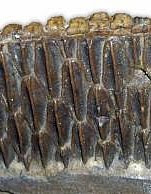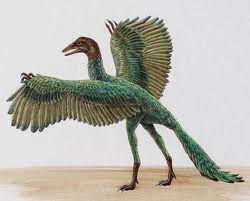The upper jaw bone of the meat-eating creature, small enough to fit in the palm of the hand, was discovered in 2004 in a formation in the Crystal Geyser area near the Green River in eastern Utah, whereit lived 125 million years ago.

Scientists speculate that it might have evolved into a highly intelligent creature.
Scott Foss regional paleontologist with the Bureau of Land Management said that “Its skull is six times larger than other dinosaurs”.Scott Foss said that “One [find] is unusual, eight is outstanding”. He also said that it is the newest creature featured in a paper published Wednesday in the online journal PLoS ONE.
“This string of dinosaur descriptions means that a full 1 percent of all known dinosaur species were described from lands in Utah during 2010,” said Foss.Foss said worldwide there are about 700 named dinosaurs.
Seven of the new species were found on BLM land and one in Dinosaur National Monument.Kirkland said he is unaware of such a characteristic in other fossilized dinosaurs and can only speculate on its purpose , he also added that ,”There’s no clue what it was used for”.











